30 Arctic birds and seabirds - species, facts, places, habits
Most of us dream of coming to the Arctic to see polar bears or whales for their majestic presence, impressive size, and graceful movements that can only be experienced out in the wild. Yet, some other species in the region deserve as much recognition and interest — these include polar birds. Arctic birdlife has a lot to offer environmental activists, wildlife lovers and like-minded travelers who want to see these small, yet resilient species adapting and thriving in the harsh polar conditions.
There are no other polar animals that form populations quite so big: you can see thousands or even tens of thousands of Arctic birds at a single location. You can also get closer to them as the safety concerns are not so strict, providing for perfect nature photography opportunities. We’ve put together a list of birds that you can see in the popular Arctic destinations of Svalbard, Greenland and Franz Josef Land. Learn about their looks, breeding, and behavioral traits, along with some fun facts and preferred habitats.
Kittiwake
One of the most common representatives of all the birds in the Arctic, the kittiwake looks a bit like a seagull but is smaller in size and has a shorter yellow beak. Depending on the color of its legs, you will often find red- or black-legged added to its name. During the summer, this bird can be seen nesting on the rocky cliffs of Svalbard or Franz Josef Land.
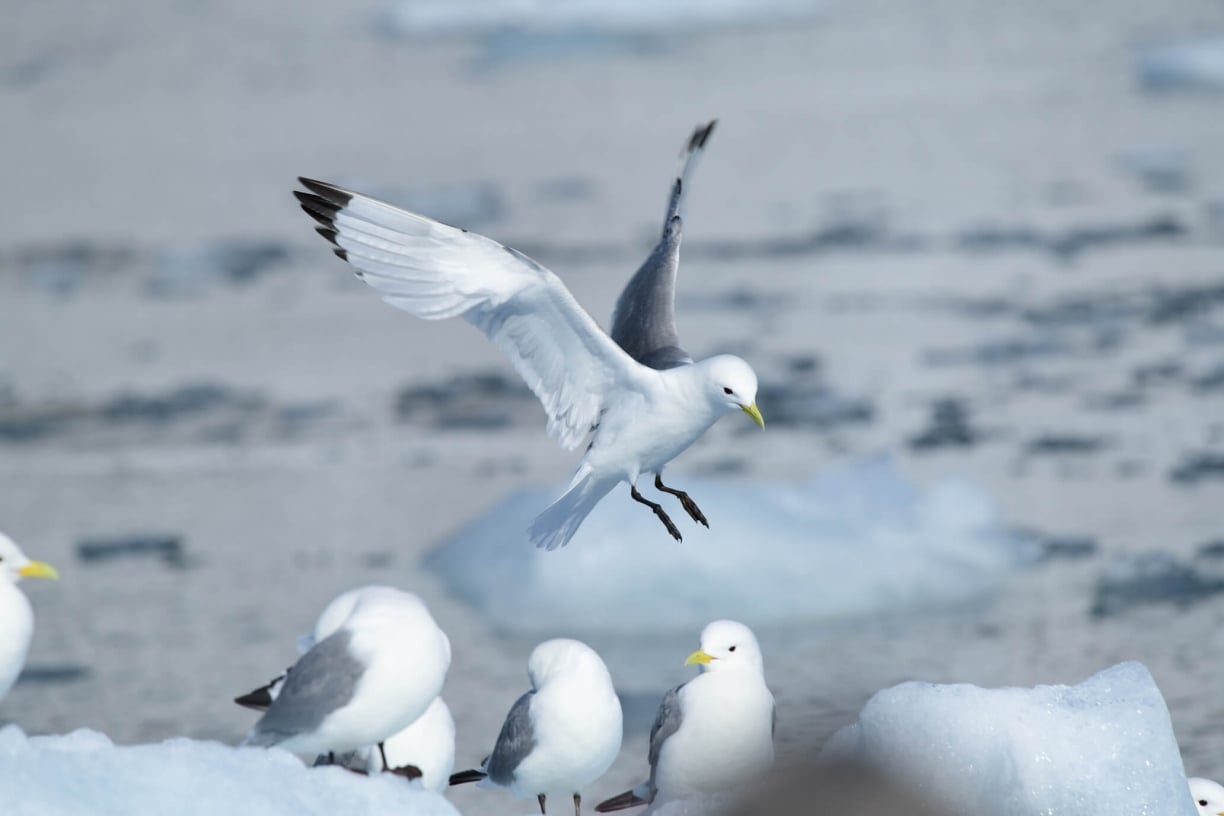
Black guillemot
This bird is mostly black (hence the name) with red legs and white patches on its wings. In the Arctic, they can often be spotted close to the pack ice, which makes Svalbard and Franz Josef Land the perfect places to see them. Some of the Arctic bird colonies can reach up to 10,000 members. To hunt for food, they dive just beneath the surface, being able to hold their breath for more than 2 minutes at a time. Once the prey is caught, adults carry it back to their cliff nests by holding it athwart the beak.
Brünnich’s Guillemot
To tell a Brunnichs guillemot apart from the black one, you would need to look at the location of the white spots on the bird’s body: with these species, it would be tuxedo-like, on their belly and not the wings. This pelagic bird also goes by a different name in some regions, the thick-billed murre. They are exceptional divers and can go as deep as 100 meters or more, staying underwater for 3+ minutes. They can be spotted resting on ice floes and nesting on cliffs.
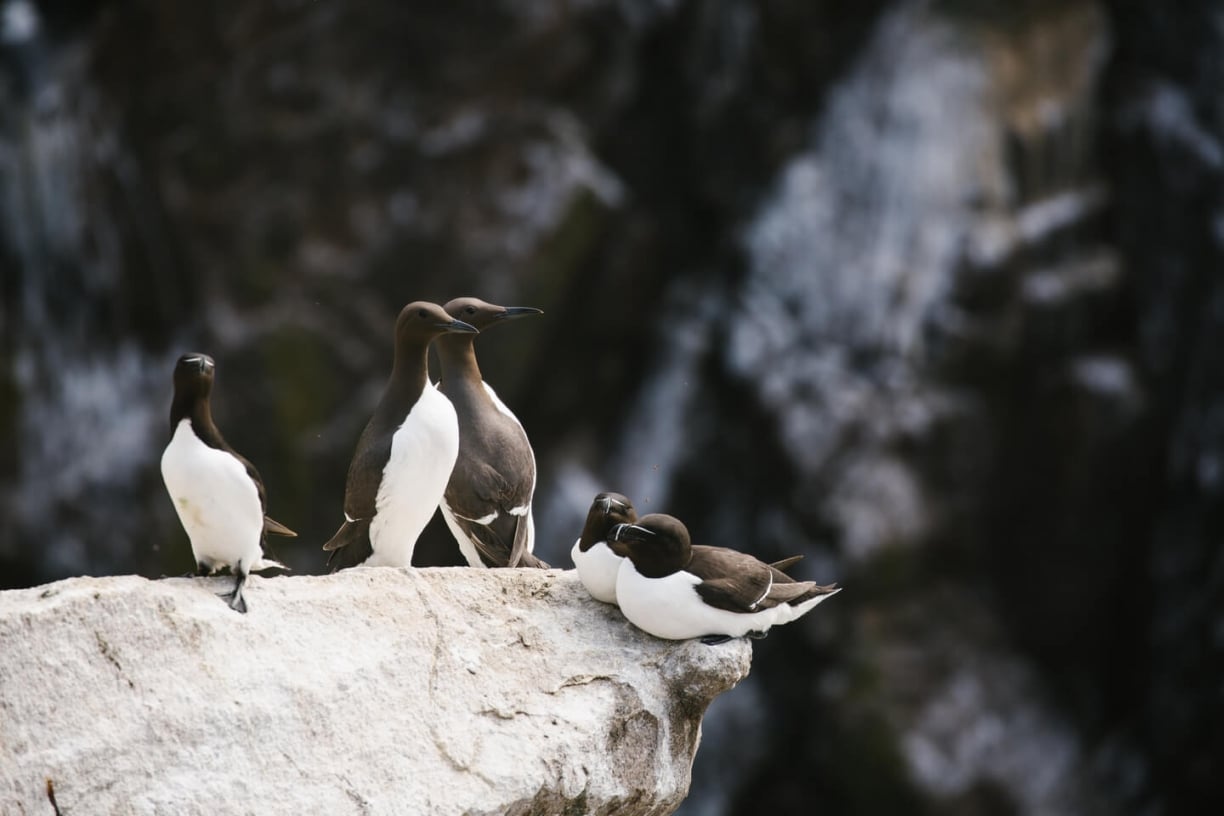
Arctic skua
These bandits of the Arctic birds also go by the name of parasitic jaegers, which matches their lifestyle, too, as they mostly prey on other birds, their food, or eggs, sometimes even staging group attacks. They come to the High Arctic areas to breed, choosing to nest on the ground and forage on other birds above the water. To recognize them, look for birds with sharp wings and an athletic build chasing others around.
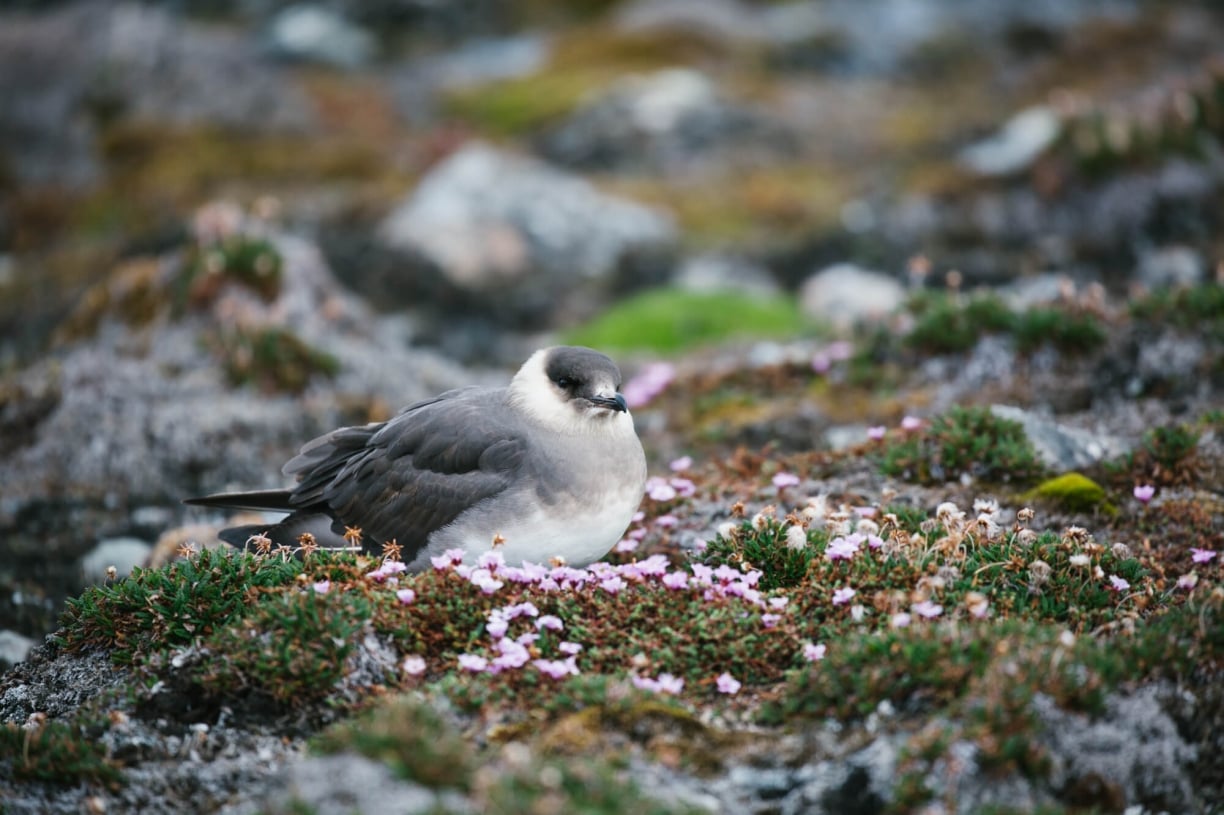
Northern fulmar
With an impressive 30+ year lifespan and a later start to breeding, Northern fulmars are abundant in most regions of the Arctic, coming to nest on cliffs in the summertime and glide over the ocean for the rest of the year. You can usually spot them from the ship’s deck. These birds bear similarities to albatrosses in their appearance given their heavy build and tube-shaped nostrils.
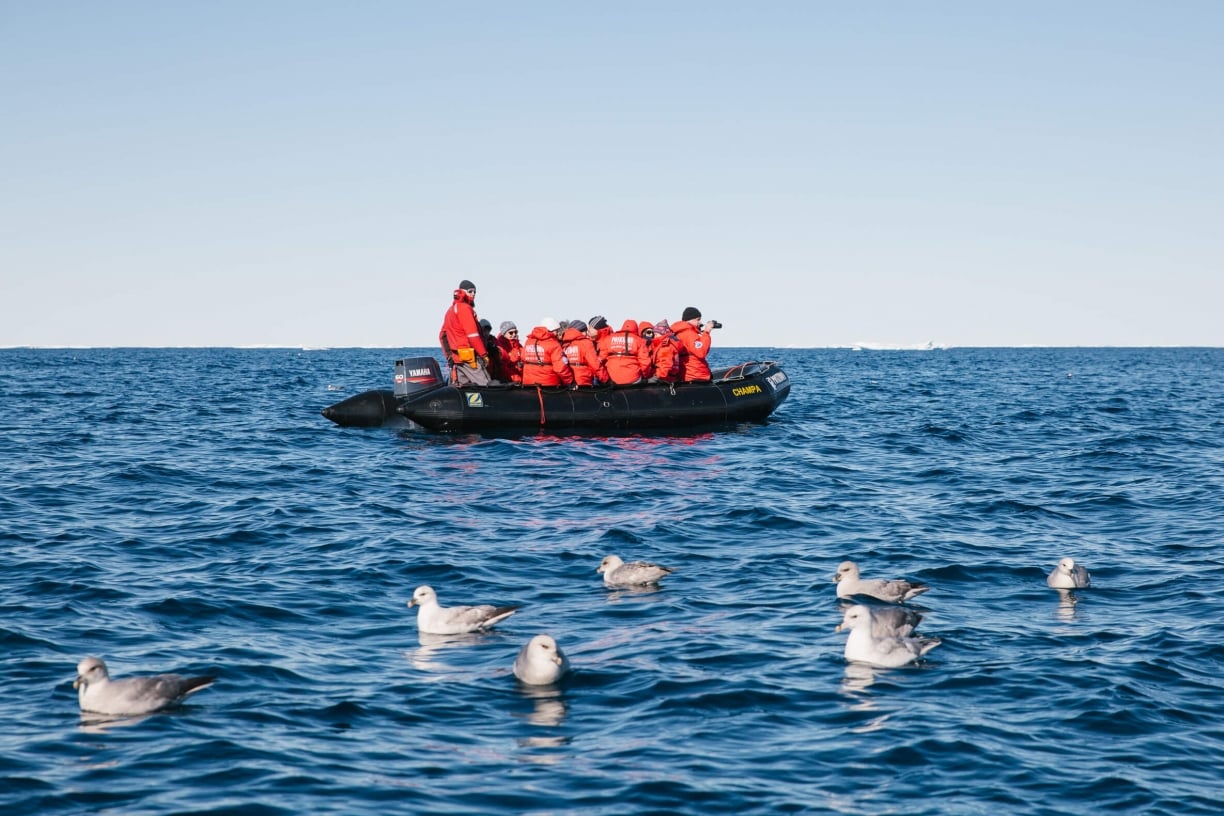
Arctic tern
These petite social birds are renowned for their migration distances: they annually travel from pole to pole, coming to the Arctic to breed and to Antarctica for the winter. Arctic terns can reach 20-30 years of age and prefer to nest on the ground in busy colonies. You can recognize them by their pointy wings, the black cap on their head, a silver-grey body and a red bill and legs.
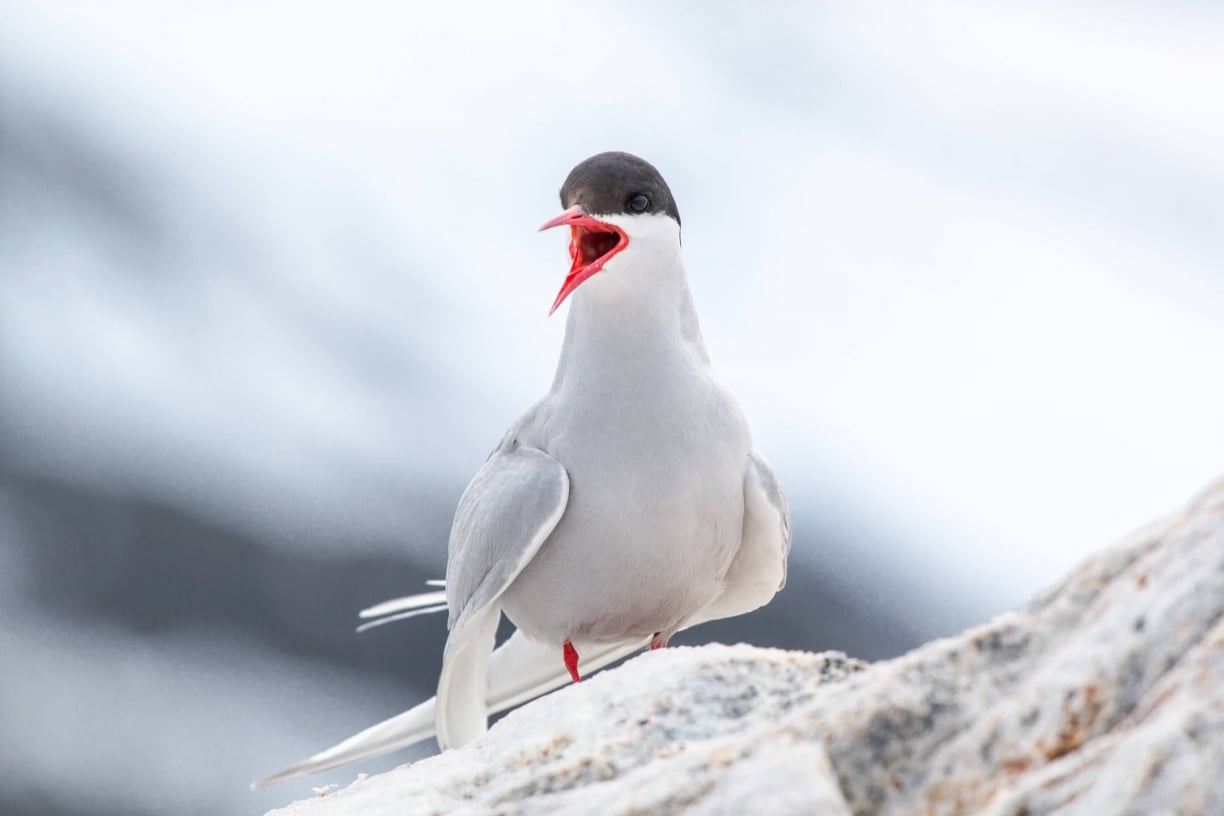
Glaucous gull
A glaucous gull is among the signature Arctic birds, matching the surroundings with its pale white and grey coloring. These species are foragers, meaning, like regular gulls, they eat pretty much anything they can find, including babies and eggs from other birds. They can even be cunning at times, waiting for other animals, like Arctic foxes, to rummage through bird colonies.
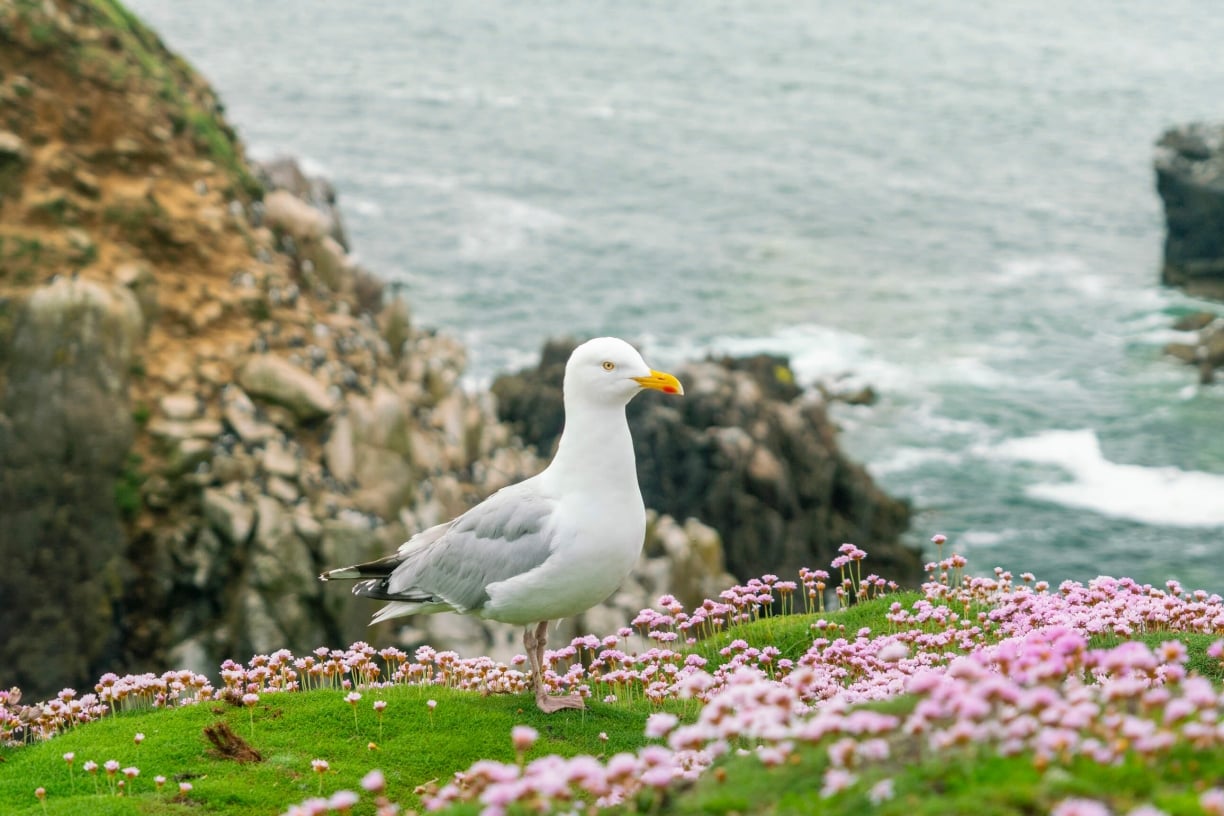
Ivory gull
These smallish High Arctic birds are all white, except for their black legs. They are known polar bear companions and heavily rely on the sea ice for a living. Ivory gulls have been spotted as far up North as 88 degrees. Climate change, therefore, could harm their food sources and habitat. Ivory gulls are foragers, like the other gulls, so they prefer to scavenger off polar bear prey and seal afterbirth.
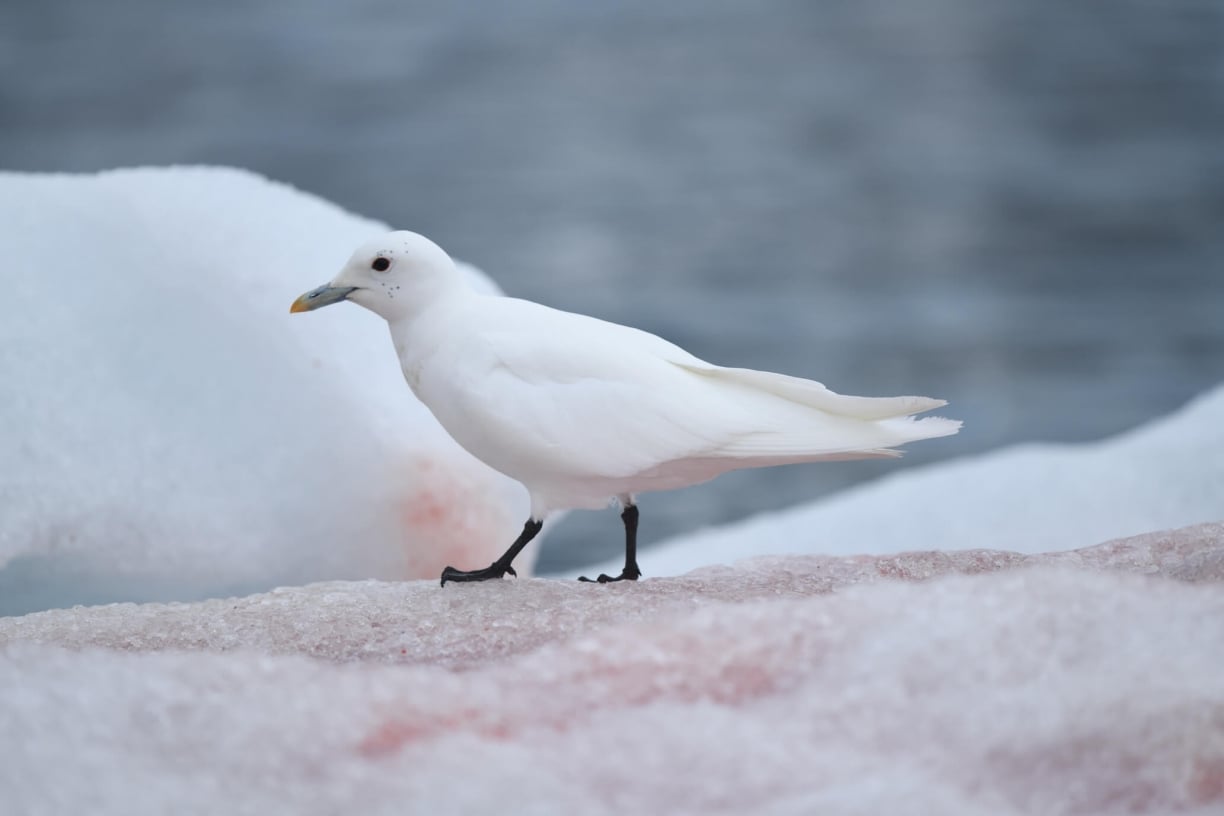
Great cormorant
Great cormorants are somewhat similar to ducks — they have palmate feet and waterproof plumage, but it is not as effective, so you may often spot them standing on the rocks with their wings spread open to dry. They prefer to nest on cliffs and catch fish by taking dives in the shallow coastal waters.
Razorbill
A bird with a striking black-and-white appearance, the razorbill can be recognized by its sharp beak, marked by a thin white line that starts at the eye area. It makes a sharp, creaking door noise, and can be seen nesting on the cliffs that overlook the ocean, particularly in the British Isles.
Little auk
Little auks, also known as dovekies, are among the few iconic Arctic birds: plentiful in numbers, they usually live in the High Arctic areas where only cruise ships tend to go. They prefer cliffs as their breeding ground, but they’re otherwise seen around the pack ice: resting, swimming or diving to hunt for invertebrates. Look for tiny black birds with white bellies to distinguish them.
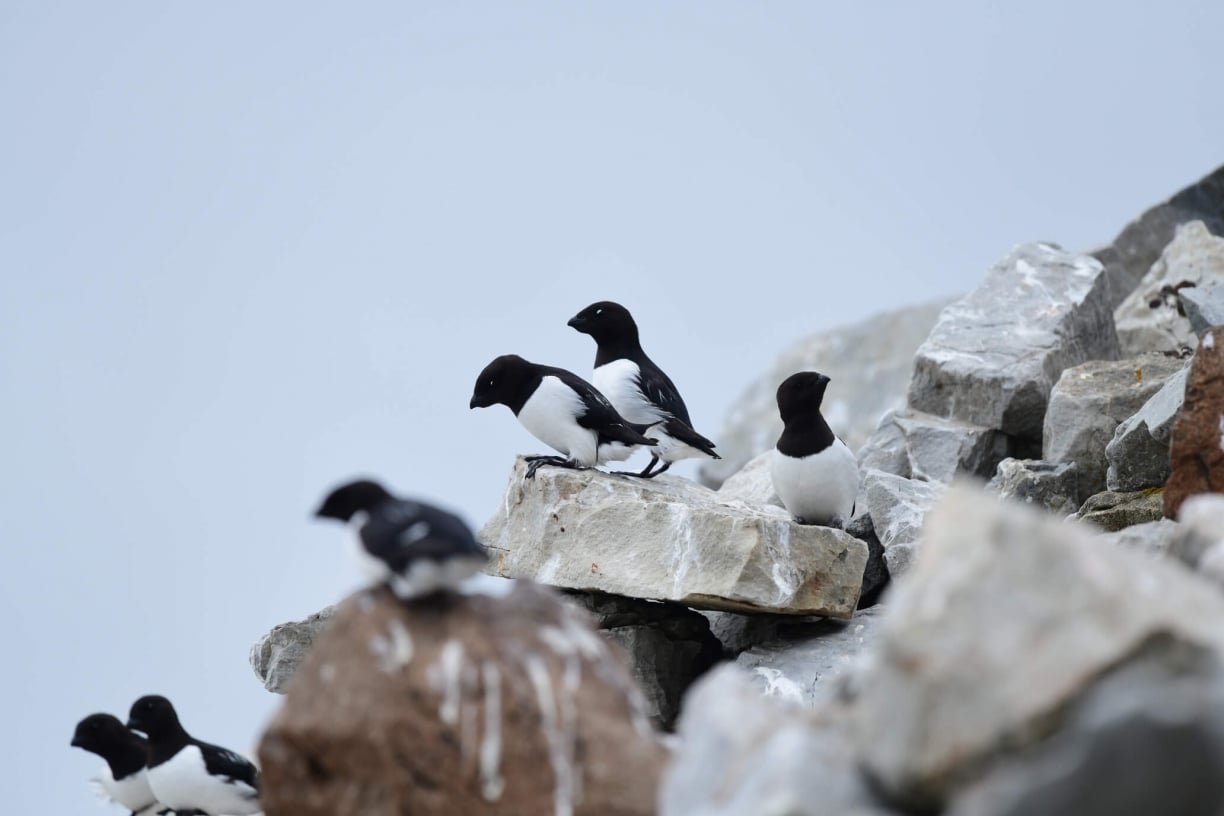
Northern gannet
Northern gannets are very noticeable among other bird species: they have a very pointy grey bill with black contours leading up to the blue eyes, a sharp, elongated body and a yellowish crown with white feathers. Their biggest colony can be seen on Bass Rock in Scotland. They take aerial dives to hunt for fish, swiftly maneuvering around other gannets thanks to excellent vision and loud vocalization.
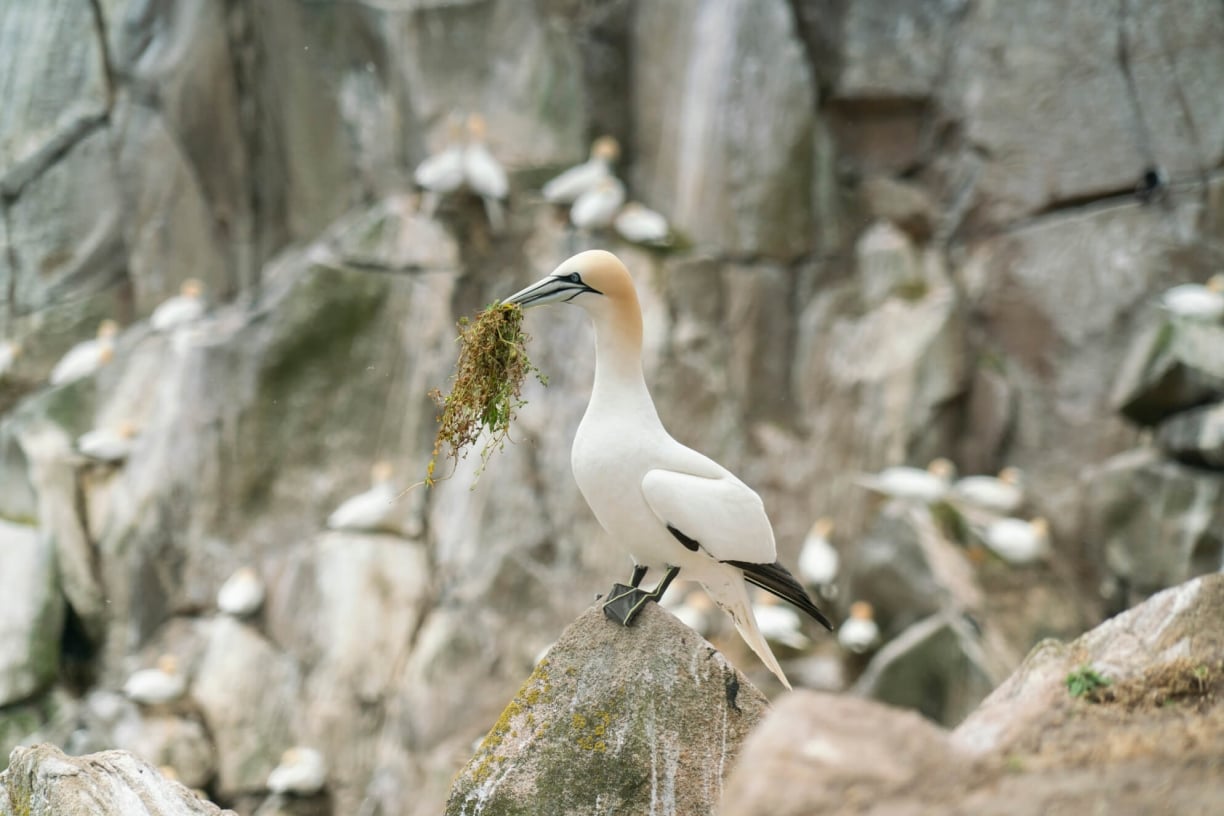
Atlantic puffin
The Atlantic puffin is often considered to be very photogenic due to its big multicolored bill with lots of orange to contrast its otherwise black-and-white attire. Its wings are a bit small for flying, but are very efficient for water hunting. From late spring until the end of the summer, puffins form large colonies to nest in burrows on islands near the ocean.
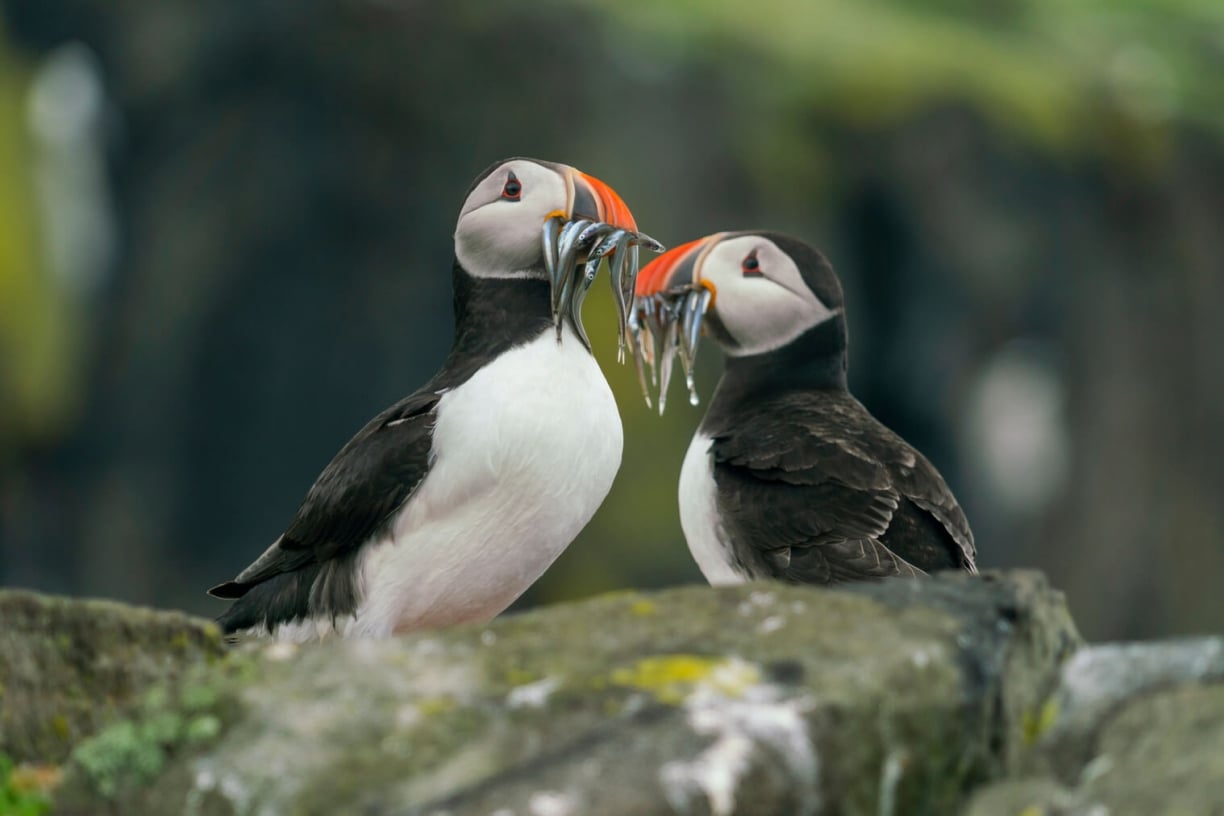
Barnacle goose
These types of geese are on the small side and sport a pretty combination of black, white and grey, specifically, with a white face and a black neck and top of the head. They breed in the areas of Greenland and Svalbard, choosing to fly or nest in groups. Barnacle geese are often targeted by polar bears and Arctic foxes, so they prefer to nest on cliffs.
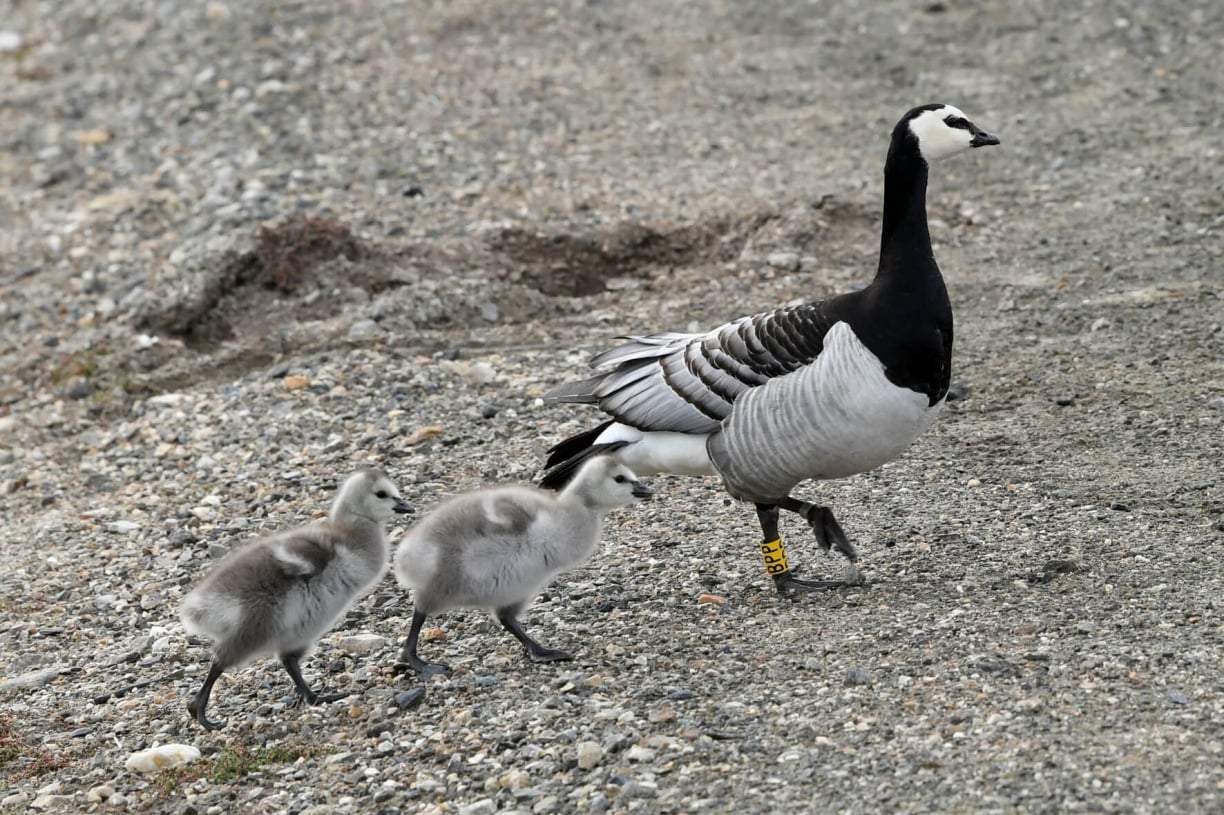
Snow bunting
These Arctic birds are a good example of perseverance in cold climates. They choose to nest in rock cavities, which are secure from predators but are quite cold, even during the summer months in High Arctic areas. Males arrive early, when the ground is still covered in snow, to start lining the nests with fur and feathers, and take care of the females by providing food while they keep the eggs warm.
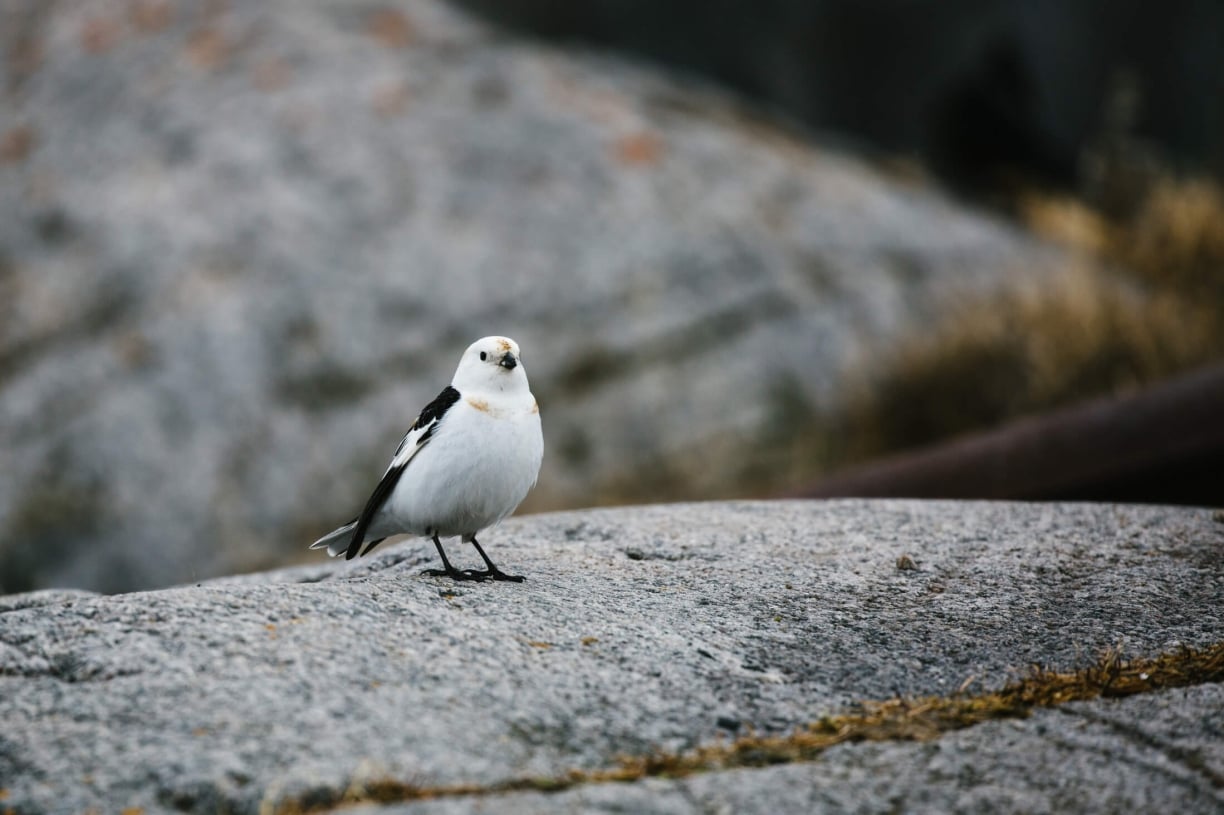
Common redpoll
These cute birds, marked with a touch of red, can adapt to the colder weather of the Arctic tundra, and often come here to breed. Even though there are usually no trees in the higher latitudes, they find shelter in bushes and shrubs. They are seed eaters and can also be seen in forests and towns of North America, looking for feeders. Redpolls travel in groups and make high-pitched, energetic thrills.
Sanderling
Sanderlings are surprisingly diverse in their habitat during the year: while they frequent the sandy beaches of the world from autumn to spring, they come to the High Arctic to breed during the polar summer. For some birds, that requires covering a rather long distance. You can recognize them by pointy black bills and longish legs.
American tree sparrow
Despite the name, these birds are, in fact, ground birds. They are common in Canada and North America, but like some of the previously mentioned Arctic birds, they come to the high latitudes to breed. Their bodies are rather plump, and the plumage is rusty with a touch of black and white.
Rough-legged hawk
This hawk, found globally across the northern latitudes, comes to the Arctic cliffs to nest and hunt for small rodents and mammals. They get their name due to the feathers that cover the whole length of their feet, all the way to the toes.
Great black-backed gull
A great black-backed gull looks almost like a regular gull, except for very black wings, a black tail and a red spot near the tip of the beak that looks like the bird is carrying something. It is the largest gull in the world. During the winter season, you can spot them following flocks of humpback whales as they hunt the fish that come up to the surface.
Lesser black-backed gull
Similar in appearance, but more petite in size, this gull is rather slender-looking and has long limbs and bright yellow legs. Like its fellow gulls, it’s an opportunistic eater that will forage on anything it can find, even parts of the nests and eggs of other birds. Great gulls may attack it for food.
Great northern diver
The common loon, also known as the great northern diver, can give off a slightly creepy vibe with its red eye standing out against the black of the head and eerie high-pitched cries. Loons are very skilled divers, given their second name, but are rather awkward on land, coming ashore only to nest.
King wider
These gorgeous birds are easily distinguishable by the appearance of males: with green cheeks, orange crowns with black lining coming up above the red bills and a pearl-blue crown. They prefer the northern High Arctic tundra to nest, migrating in shared flocks with tens of thousands of other Arctic birds.
Long-tailed duck
This funny-looking duck sports a three-feather tail that is almost as long as the rest of its body. This bird also has a noticeable black-and-brown spot on the side of the neck. It comes to the High Arctic to breed, but tends to avoid ice, staying closer to the shore or looking for protected bays. It’s a skilled diver and can spend a lot of time underwater.
Pink-footed goose
These migratory geese can be spotted in Iceland, Svalbard and Greenland as they come to breed during the summer. As with other Arctic birds, they choose secluded spots like higher cliffs for their nests to protect the chicks from Arctic foxes and other predators. At the end of the summer or the beginning of autumn, the geese start heading back south together with their newborns.
White-tailed ptarmigan
Ptarmigans change their coloring with the seasons, being completely white in the winter and brown in the summer to fit their surroundings. Their usual habitat is the tundra, from Alaska to New Mexico, where they find shelter beneath the tree line or the openings in rocks and forage on the ground to look for vegetation.
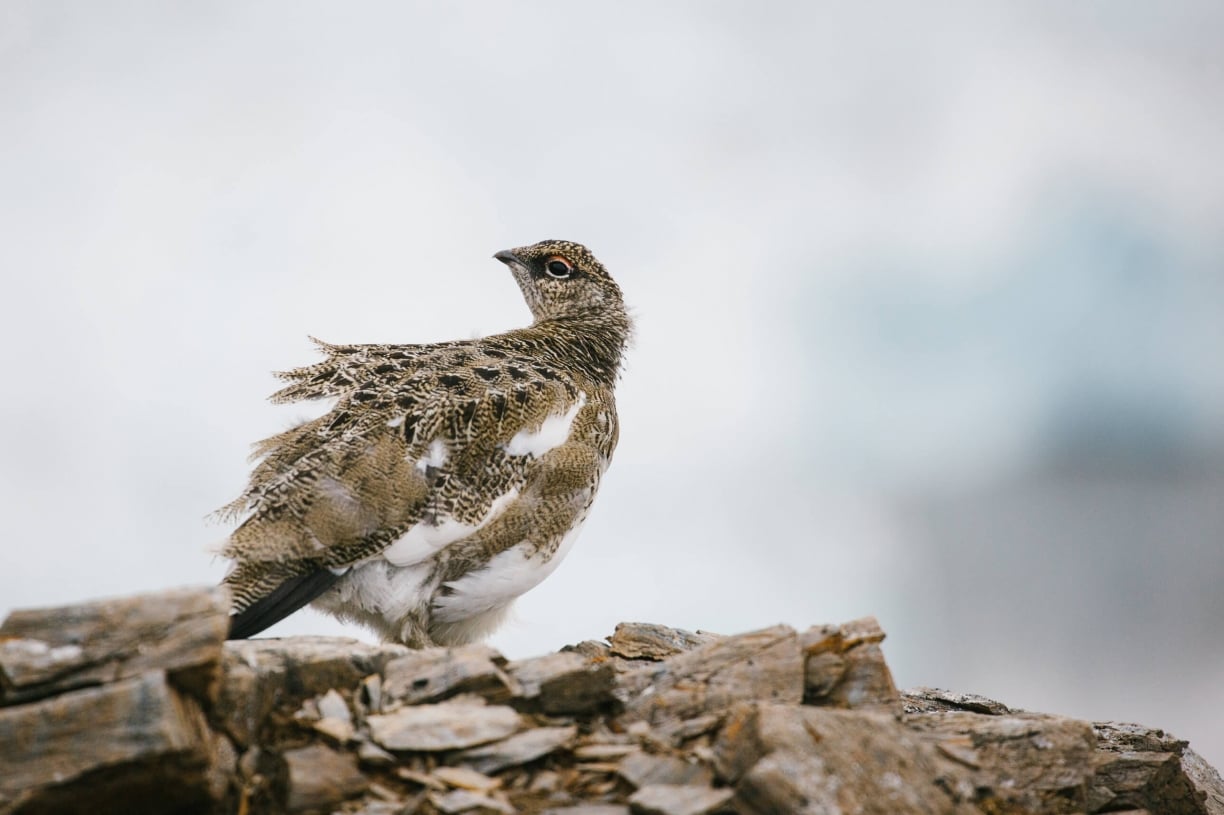
White-tailed eagle
A true predator, this eagle is among the largest prey birds in the area. Not afraid of the snow and cold, white-tailed eagles frequent cliffs and rocks along ocean coastlines, occasionally staying on islands. They not only hunt other birds, but sometimes simply steal their food.
Red phalarope
These Arctic birds were recognized by whalers a few centuries ago as they tend to follow bowhead and grey whales to look for food in the water, coming up to the surface as the whales make their path. During the breeding season, their bodies are red, with the exception of a white circle around the eyes and a black spot on top of the head.
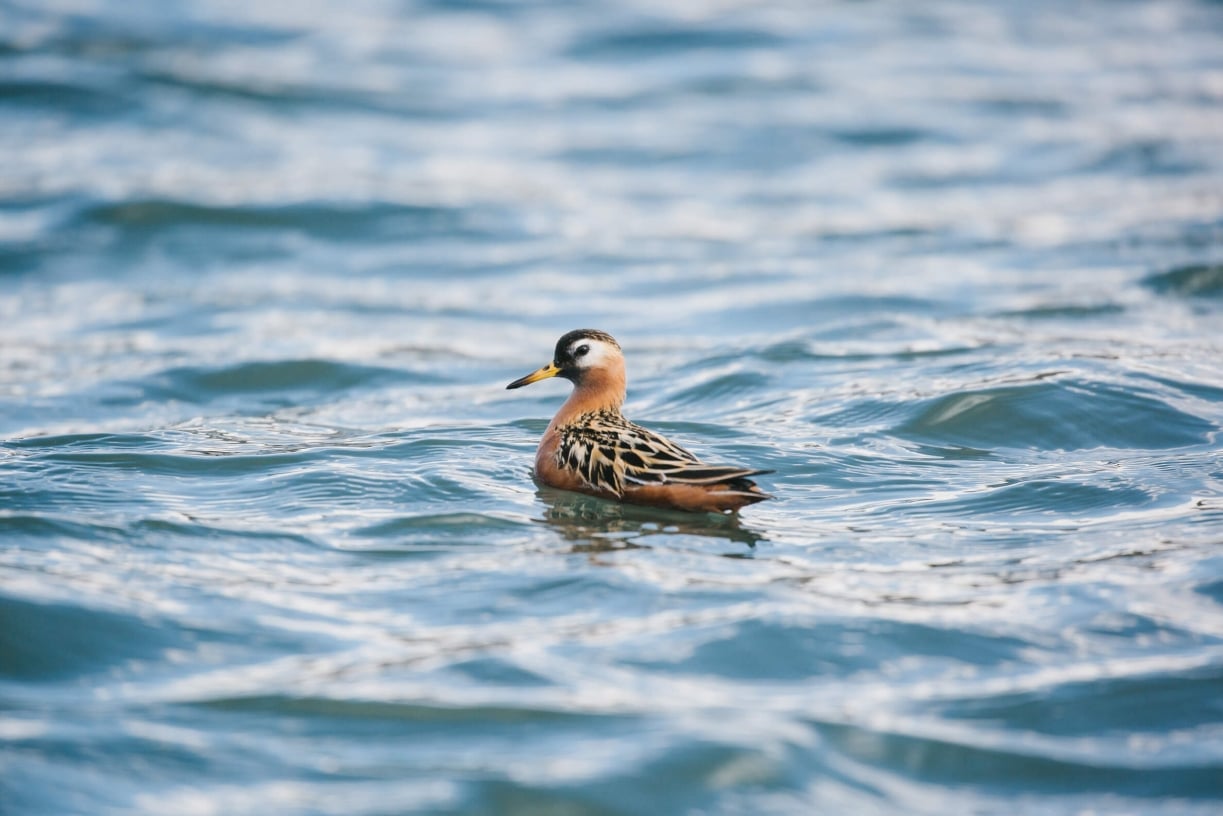
Red-throated loon
To tell these Arctic birds apart from other loons, look for the posture of their head, with the bill always pointing upwards and a fairer complexion. They are experienced fish hunters that have the grace and skill of a falcon.
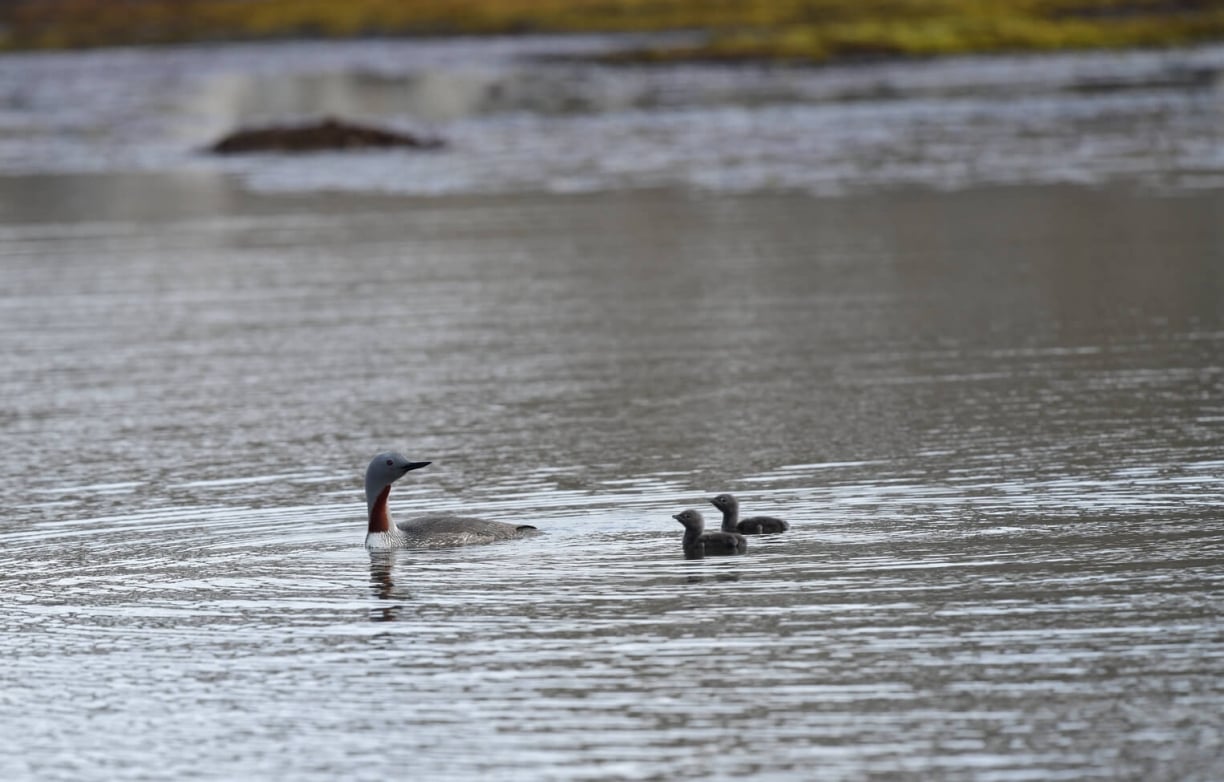
Ruddy turnstone
The ruddy prefix is caused by an unusual coloring of this turnstone: the orange coloring on its wings and feet makes it stand out against other species. It nests and looks for food near the ground, using its bill to flip debris or soil. Since it comes to the Arctic tundra to breed, it has to gain substantial amounts of fat and fly fast to cover the long distance.
Arctic birdwatching tours
As vivid as descriptions and pictures may be, nothing beats seeing Arctic birds thriving in their natural habitat: interacting with their mates, diving down into the water and coming back up to their nests, performing courtship displays, raising their young and effortlessly posing for a spectator’s camera. The sought-after destinations of Svalbard, Greenland and Franz Josef Land, as well as the British Isles area in the North Atlantic Ocean, provide perfect opportunities to experience the Arctic birdlife.
On a polar expedition, you can get to the most inaccessible bird havens of the entire Arctic where smaller boats can’t withstand the weather and ice conditions and large cruise ships aren’t able to maneuver. In May, you can join a British Isles cruise with an itinerary specifically tailored for birdwatching and anticipated locations like Bass Rock, Rathlin, St. Kilda and Fair Isle. With the advent of summer, up to three million birds flock to the natural reserves of the Svalbard archipelago, and we can follow their journey with several itineraries on the roster.
Later, in July and August, ice conditions allow the ship to reach the High Arctic archipelago of Franz Josef Land. Here, on the cliffs of numerous islands and the famed basalt columns of Rubini Rock, thousands of polar birds find their permanent and temporary homes. At the end of the season, when the auroras illuminate the night skies in Greenland, Arctic bird enthusiasts will be able to check off several bird species from their bucket list during each cruise day.
Other seabirds forming sizable breeding colonies in , and , often alongside species mentioned above, include common guillemots (Uria aalge), black guillemots (Cepphus grylle), black-legged kittiwakes (Rissa tridactyla), and Atlantic puffins (Fratercula arctica).
FAQ
How many birds will I see during an Arctic cruise?
You can expect to see 15 to 30 types of species, depending on the cruise itinerary, month and destination. As for the number of birds travelers can simultaneously spot, some of the biggest bird colonies, like Rubini Rock in Franz Josef Land or Bass Rock in the British Isles, can have up to 150,000 birds.
Can I see penguins in the Arctic?
There are no penguins in the Arctic — to see them, you would have to join one of the Antarctic cruises. Still, Arctic birdlife can offer surprising diversity, and some of the species, like the Brunnichs guillemot, even share some black-and-white resemblance to their non-flying counterparts.
Do Arctic birds migrate?
Some of the birds in the Arctic do. A particularly popular example is the lifecycle of the Arctic tern, which breeds in the Northern hemisphere and then travels to Antarctica to follow the sun, covering extreme distances every year.